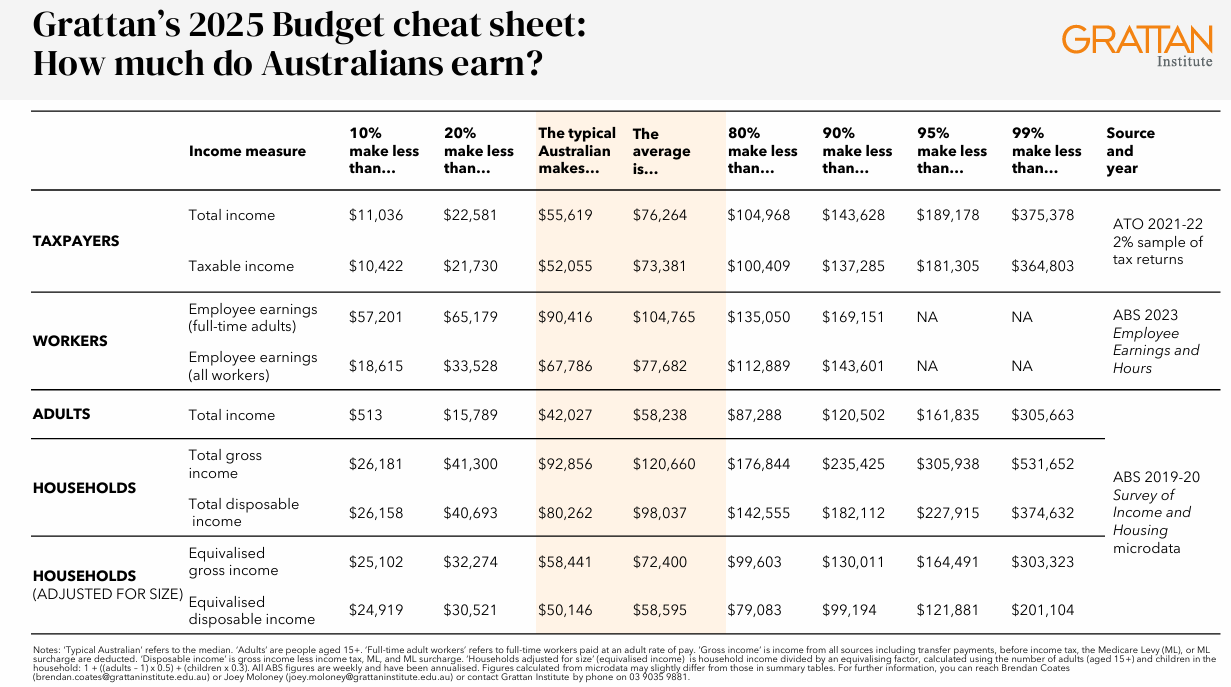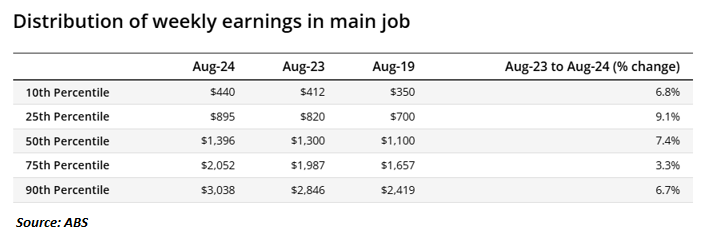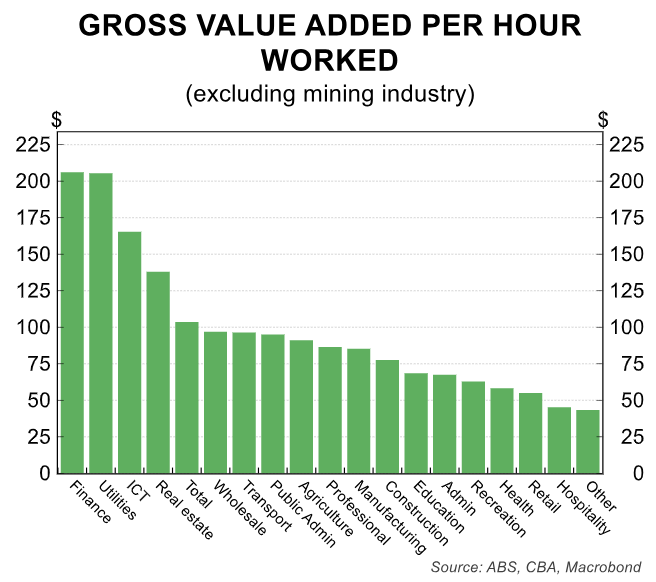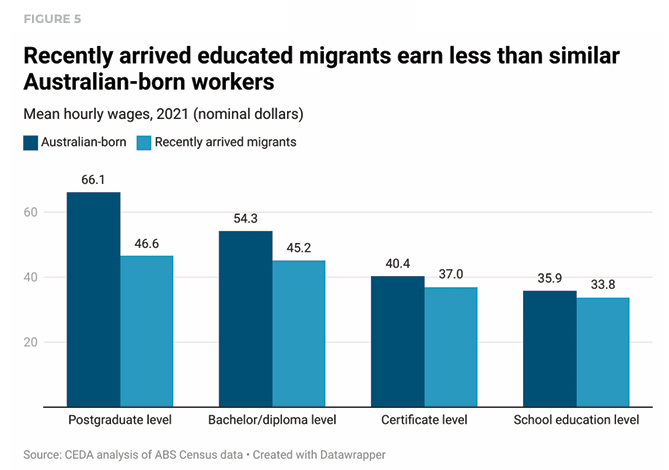The Grattan Institute has published a fact sheet on earnings across Australia:

According to Grattan, “the typical full-time Australian worker actually earns $90,416, and the typical Australian worker (including part-time workers) earns just $67,786”.
Separate data from the Australian Bureau of Statistics revealed that the median Australian working in their main job earned $72,592 in the year to August 2024, with the top 75% earning $106,704 and the top 90% earning $157,976.

The federal government’s Temporary Skilled Migration Income Threshold (TSMIT), which set a wage floor of only $73,150 for nomination applications lodged on and between 1 July 2024 and 30 June 2025, is mocked by the fact that the median full-time Australian earned $90,416—a figure that includes unskilled workers.

The Grattan Institute even lobbied for the TSMIT to apply to migrants of any age in any occupation:

Grattan wants open slather access to low-wage ‘skilled’ migrants.
Therefore, the Grattan Institute’s recommendation would have seen older migrants with years of experience being used to undercut local workers.
Skilled visa holders should be paid significantly higher than the population median full-time wage. Otherwise, they cannot be regarded as truly skilled.
The minimum pay for skilled visa holders (both permanent and temporary) should be established at the 75th percentile of wages ($106,704 in August 2024 – see table above).
This would ensure that skilled migrants are employed to address genuine skills shortages rather than being imported in large numbers to undercut local wages and conditions.
It would also boost productivity, since low-wage professions such as hospitality, retail, health and recreation tend to have the lowest labour productivity.

As noted by the Committee for Economic Development of Australia (CEDA) recent ‘skilled’ migrants are chronically underpaid.

CEDA warned that Australia’s low-wage migration system was contributing to the nation’s chronically poor productivity growth.
“Labour productivity and wages are closely linked, indicating that migrant labour is not being used as productively as it could be”.
“This decade, migrants have become increasingly likely to work in lower productivity firms”.
The optimal policy solution is running a smaller, more skilled, well-paid migration system.

